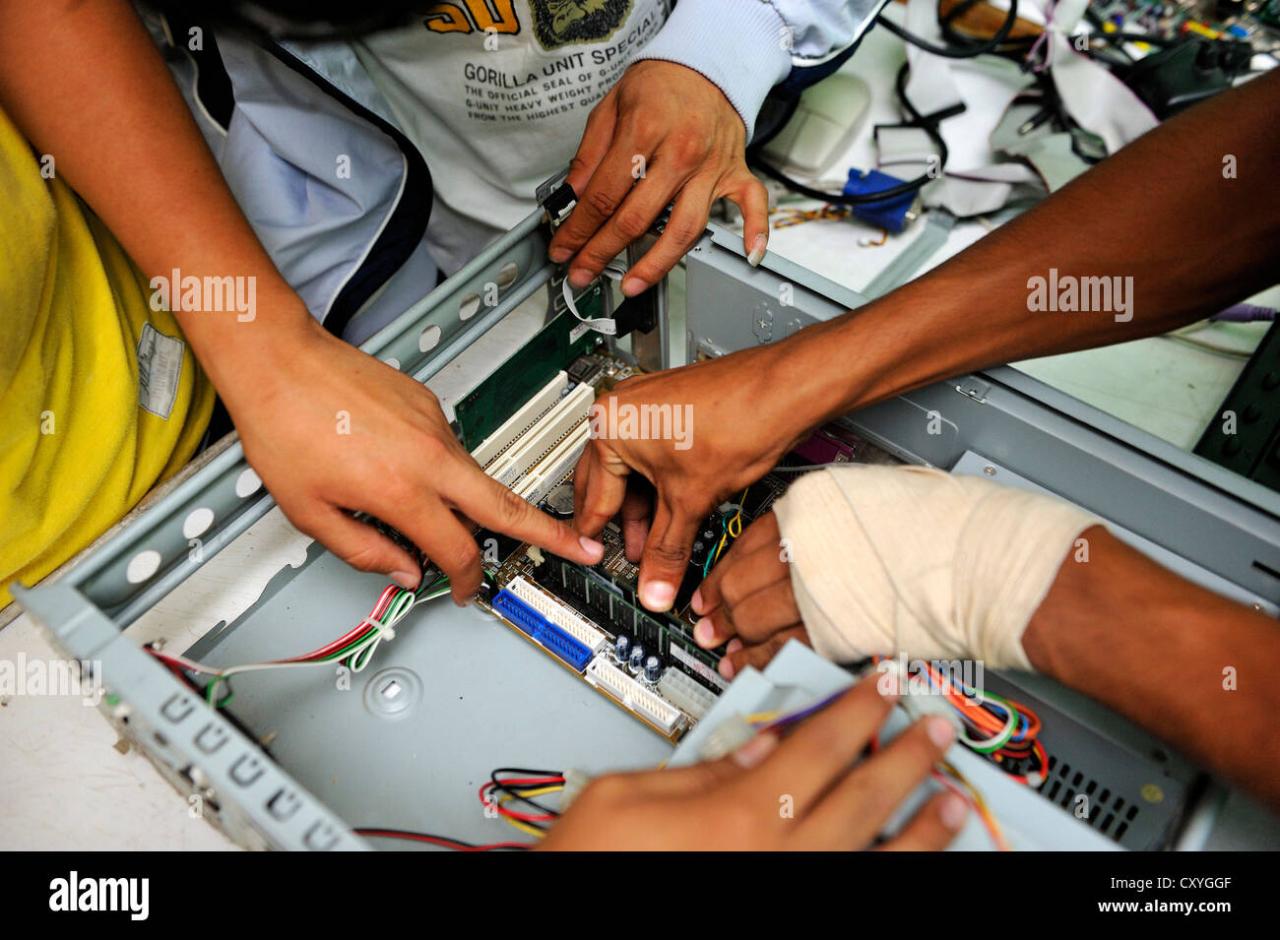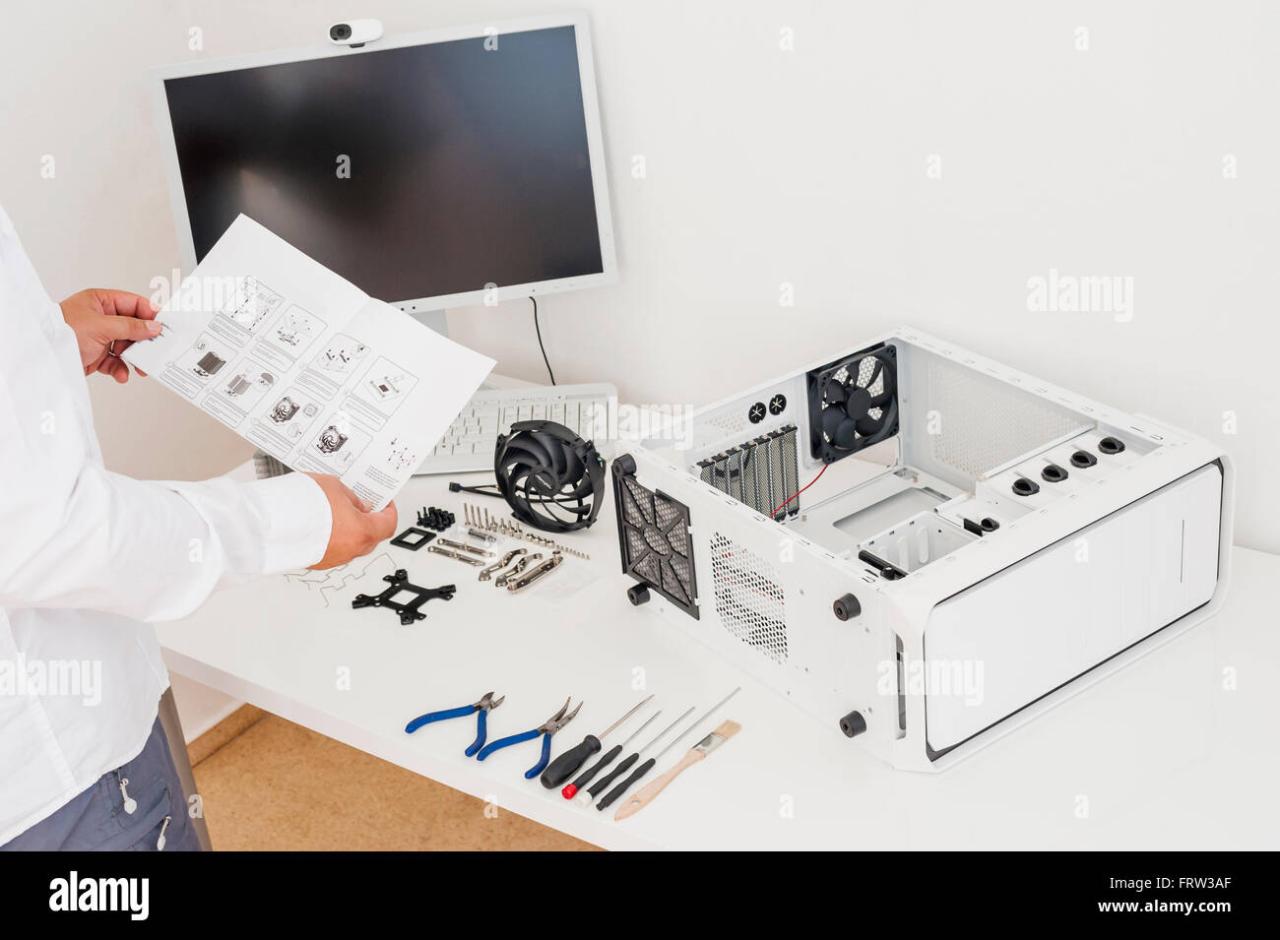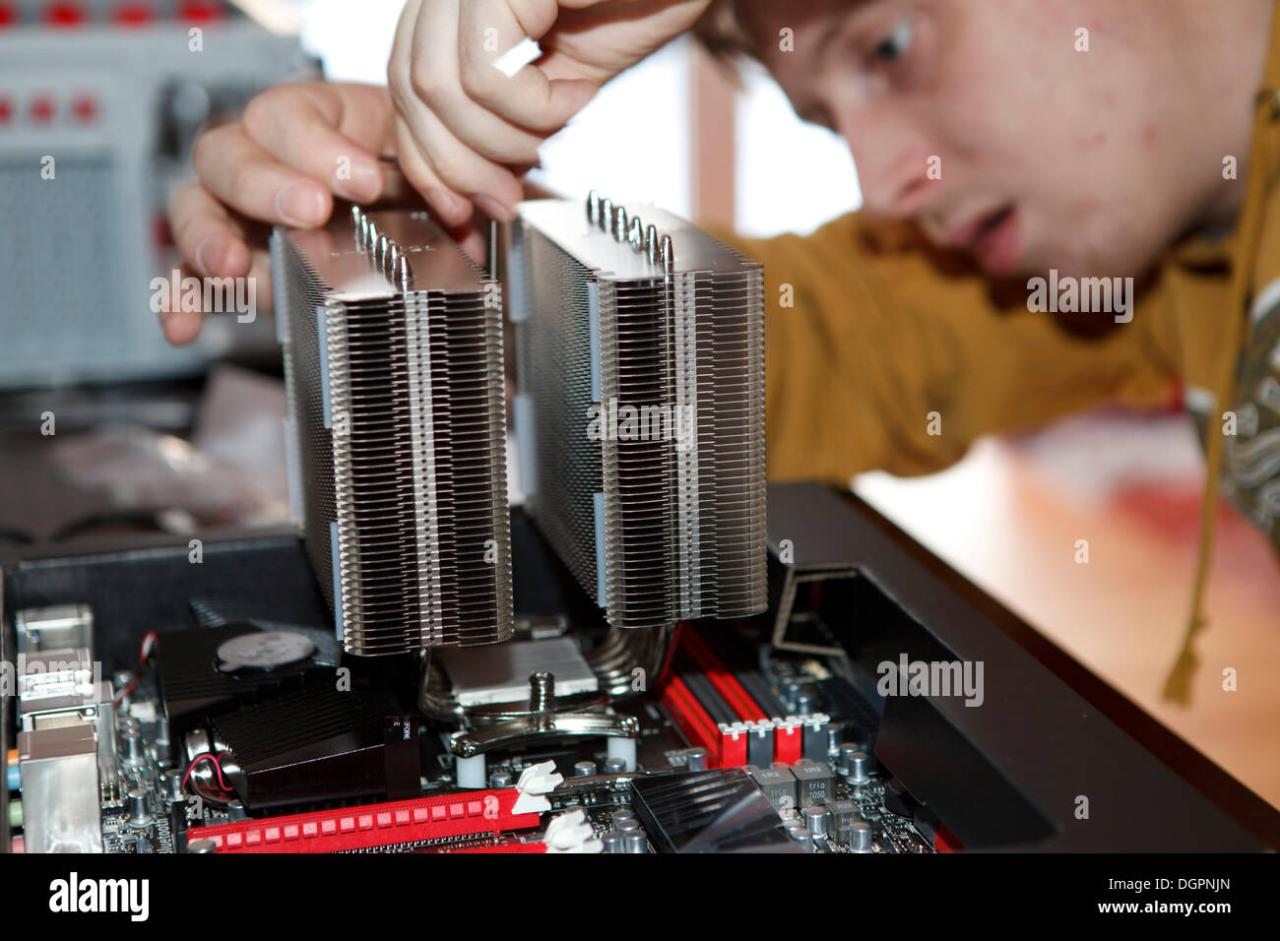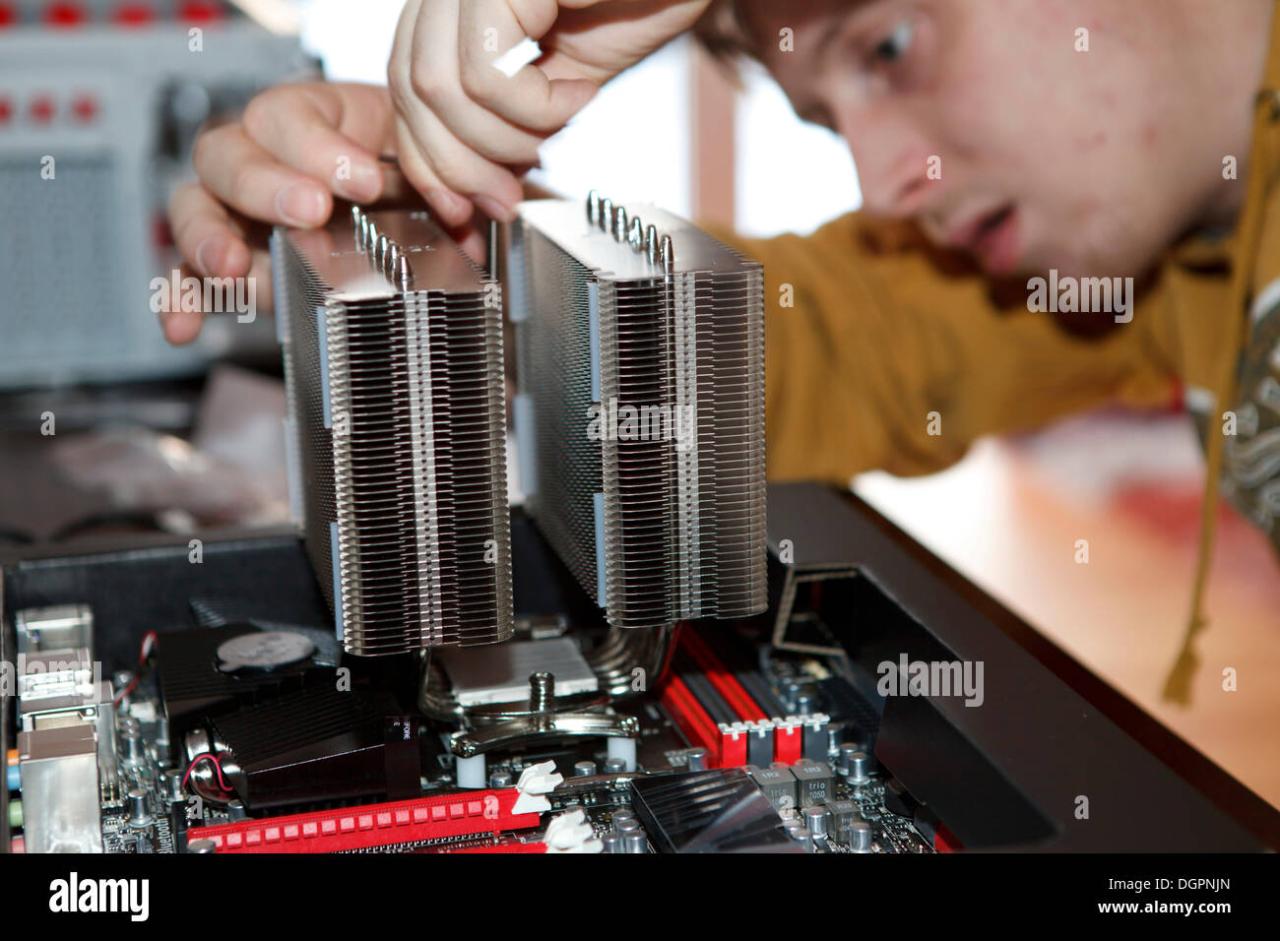PC Builder: Dive into the exciting world of custom PC building! From choosing the perfect components to assembling your dream machine, this guide walks you through every step. Whether you’re a seasoned tech enthusiast or a complete beginner, we’ll equip you with the knowledge and confidence to build a PC tailored to your needs and budget.
We’ll cover everything from understanding the different PC components and their compatibility to mastering the assembly process and troubleshooting potential issues. We’ll also explore the best PC builder software, online communities, and resources to help you along the way, ensuring you create a powerful and reliable machine that meets your specific requirements, whether it’s for gaming, professional work, or general use.
PC Builder Market Overview
The PC builder market is a dynamic landscape experiencing significant growth, driven by factors like the rise of gaming, remote work, and increased demand for customized computing solutions. Major trends include the increasing adoption of higher-performance components, a shift towards more compact and aesthetically pleasing PC cases, and the growing popularity of liquid cooling systems. This market is segmented by user needs and budget, ranging from budget-friendly builds for everyday tasks to high-end configurations for professional use and extreme gaming.
Key Players and Market Share
While precise market share data is often proprietary, major players in the PC builder market include component manufacturers like Intel, AMD, NVIDIA, and various motherboard, RAM, and storage providers. Large online retailers such as Newegg and Amazon also play a significant role in distribution and sales. The market is largely fragmented, with numerous smaller companies and individual builders competing for market share.
Market Segmentation
The PC builder market caters to diverse needs. The budget segment focuses on affordability, prioritizing essential components for basic tasks like web browsing and office work. The enthusiast segment prioritizes high performance and customization, often incorporating top-of-the-line components for gaming or content creation. The professional segment demands reliability, stability, and often specialized components tailored for specific applications like video editing or CAD.
Comparison of PC Builder Platforms

| Platform | Pricing (USD) | Features | Pros | Cons |
|---|---|---|---|---|
| PCPartPicker | Free | Component compatibility checking, price comparison, build list creation | Comprehensive, easy to use, widely trusted | Limited customization options beyond basic builds |
| Logical Increments | Free | Component recommendations based on budget and use case, build guides | Excellent for beginners, clear guidance | Less emphasis on price comparison |
| CanYouRunIt | Free (with ads) | Game compatibility checks, system requirements analysis | Useful for determining if your system can run specific games | Primarily focused on game compatibility, less comprehensive for general builds |
Components of a PC Build
Building a PC requires careful selection and assembly of several key components. Understanding their roles and compatibility is crucial for a successful build.
Essential Components
The core components include: the CPU (Central Processing Unit), the brain of the computer; the GPU (Graphics Processing Unit), responsible for visual output; RAM (Random Access Memory), for short-term data storage; the Motherboard, connecting all components; Storage (SSD or HDD), for long-term data storage; the PSU (Power Supply Unit), providing power; and the Case, housing all components.
Building a powerful PC can be a rewarding experience, especially if you’re into simulating complex systems. For example, you could build a rig capable of processing the vast amounts of data related to drone sightings around the world , analyzing flight patterns, and even predicting potential airspace conflicts. This kind of project would require a serious graphics card and plenty of RAM, so plan your budget accordingly!
Component Compatibility
Compatibility is vital. The CPU must be compatible with the motherboard socket type. The motherboard must support the RAM type and speed. The PSU must provide sufficient wattage for all components. The case must accommodate the motherboard size and cooling solutions.
Careful research and component selection are crucial to avoid incompatibility issues.
Building your own PC can be a rewarding experience, letting you customize every aspect. Before you start though, you might want to check if ChatGPT is working correctly – sometimes it’s helpful to use it for component research, so check the status here: is chatgpt down. Once you’ve confirmed that, you can dive back into choosing the perfect CPU, GPU, and other components for your dream build!
Component Selection Guide
Component selection depends on budget and intended use. For gaming, a powerful GPU is essential. For professional work, a high-core-count CPU and ample RAM are critical. Budget builds may compromise on some aspects to achieve affordability.
Sample PC Builds
Here are examples illustrating component selection for different needs:
- Budget Gaming PC: AMD Ryzen 5 5600G (CPU with integrated graphics), 8GB DDR4 RAM, B550 Motherboard, 500GB SSD, 500W PSU, budget-friendly mid-tower case. This build prioritizes affordability while still delivering decent gaming performance at lower settings.
- High-End Workstation: Intel Core i9-13900K, 32GB DDR5 RAM, high-end X670E Motherboard, 2TB NVMe SSD, 1000W PSU, large tower case with advanced cooling.
Building a PC: A Step-by-Step Guide
Assembling a PC can seem daunting, but with a methodical approach, it’s manageable. Remember to work in a clean, static-free environment.
Step-by-Step Assembly, Pc builder
- Prepare the Case: [Image description: A clean, well-lit workspace with a PC case laid open, showing the interior components and mounting points.] Remove side panels and organize components.
- Install the CPU: [Image description: Close-up of a CPU being carefully placed into the motherboard socket, with clear visual indicators of alignment.] Align the CPU with the socket and gently lower it into place.
- Install the CPU Cooler: [Image description: A CPU cooler being attached to the CPU, with thermal paste applied.] Apply thermal paste and securely attach the cooler.
- Install RAM: [Image description: RAM sticks being inserted into the motherboard slots at a slight angle.] Insert RAM modules into appropriate slots at an angle and press firmly.
- Mount the Motherboard: [Image description: The motherboard being carefully placed and screwed into the case.] Secure the motherboard to the case standoffs.
- Install Storage Devices: [Image description: An SSD being securely mounted into the case’s designated bay.] Connect SSDs/HDDs to the motherboard.
- Install the GPU: [Image description: A graphics card being carefully inserted into the PCI-e slot.] Insert the GPU into a PCIe slot and secure it.
- Connect PSU Cables: [Image description: Various power supply cables being neatly connected to the motherboard and other components.] Connect all necessary power cables to the motherboard, GPU, and storage devices.
- Cable Management: [Image description: The inside of the PC case with all cables neatly organized and secured.] Organize cables to improve airflow and aesthetics.
- Close the Case: [Image description: The completed PC build with the case closed.] Replace the side panels.
Troubleshooting
Common issues include boot failures (check RAM, CPU, and GPU connections), no display (check GPU connection and monitor settings), and overheating (check cooling solutions).
PC Builder Software and Tools
Various software applications and tools can simplify the PC building process, from component selection to system monitoring.
PC Builder Software Comparison
PCPartPicker, Logical Increments, and similar tools assist in component selection, compatibility checking, and build planning. Each offers a unique set of features and strengths, catering to different user preferences and needs.
Building your own PC can be a rewarding experience, but optimizing your network is key for smooth performance. For example, if you’re experiencing lag, you might want to check if your router is using the optimal 5 GHz band; you can easily figure that out by following these steps on how to check your wifi ghz on iphone: how to check your wifi ghz on iphone.
Knowing your WiFi speed helps you make informed decisions about your PC build, ensuring everything runs smoothly from the start.
Key Features and Functionalities
Key features include component compatibility checks, price comparison tools, build list creation, and system requirement analysis. Some tools also offer performance benchmarks and system monitoring capabilities.
Advantages and Disadvantages
Advantages include streamlined component selection, reduced risk of incompatibility, and easier budget management. Disadvantages can include limited customization options in some tools or reliance on external data sources for pricing and availability.
Useful Tools and Resources

- PCPartPicker
- Logical Increments
- CanYouRunIt
- Tom’s Hardware
- Reddit’s r/buildapc
PC Building Communities and Resources
Engaging with online communities provides valuable support, information, and troubleshooting assistance for PC builders of all skill levels.
Prominent Online Communities
Online forums and communities like Reddit’s r/buildapc, Tom’s Hardware forums, and various Discord servers offer a wealth of knowledge and support.
Benefits of Community Engagement

Community engagement allows access to collective experience, troubleshooting assistance, and advice from experienced builders. It facilitates learning from others’ mistakes and successes.
Types of Support and Information
Communities offer assistance with component selection, troubleshooting, overclocking, and general PC maintenance. They also provide access to tutorials, guides, and reviews.
Helpful Resources
- Tutorials on YouTube
- Build guides on websites like Tom’s Hardware
- Component reviews on sites like AnandTech
- Troubleshooting guides on various forums
PC Building Costs and Budgeting
Understanding the cost factors and creating a realistic budget are crucial for successful PC building.
Factors Influencing PC Build Costs
Component prices, desired performance level, case aesthetics, and cooling solutions significantly impact the overall cost. Higher-end components naturally increase the price.
Creating a Realistic Budget
Start by defining your needs and use case. Research component prices and allocate funds accordingly. Consider potential future upgrades when budgeting.
Strategies for Saving Money
Consider used components (carefully), look for sales and deals, and prioritize essential components over luxury features.
Long-Term Costs
Long-term costs include potential component replacements, maintenance, and future upgrades. Regular maintenance helps extend the lifespan of components.
Ultimate Conclusion
Building your own PC is a rewarding experience, offering unmatched customization and control over your computing power. By following this guide and leveraging the resources available, you’ll not only assemble a fantastic machine but also gain valuable technical skills and a deeper understanding of computer hardware. So, roll up your sleeves, gather your components, and embark on this exciting journey of PC building – you’ve got this!
User Queries
What’s the best time to build a PC?
There’s no single “best” time. Component prices fluctuate, so research deals and sales. Black Friday and holiday seasons often offer discounts.
How often should I upgrade my PC?
It depends on your needs and budget. For gaming, upgrading every 2-3 years might be typical to keep up with game requirements. For general use, upgrades are less frequent.
Can I reuse components from an old PC?
Possibly, but check compatibility. Motherboards, CPUs, and RAM have generation-specific limitations. Hard drives and some cases can often be reused.
What tools do I need to build a PC?
A Phillips head screwdriver is essential. Anti-static wrist strap is recommended to prevent damaging components. Zip ties can help with cable management.
